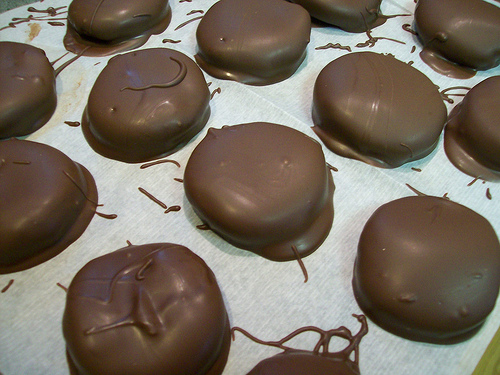
I know many people are planning to make their own chocolate dessert for Valentine's Day tomorrow. If you want to work with chocolate properly, it is a little more complicated than just melting it in the microwave. Especially if you are using a higher-quality chocolate, you want to do your best by it.
"Tempering" is just a term for melting chocolate carefully so that it behaves well. There are a lot of benefits to properly tempered chocolate, many of which are only a concern for professional chocolatiers. But for the home chocolate-handler, tempered chocolate will end up with a beautiful glossy appearance, will cool more quickly than untempered chocolate, and will pop out of molds much more easily.
Microwaving chocolate or even melting it in a pan causes problems because the chocolate does not melt evenly. Parts of it get too hot and parts of it never get hot enough. Mix it up and add it to some brownies, no problem. But if you want to create a candy mold or a really nice chocolate coating, you are going to notice a big difference in the final result.
Tempering is basically a matter of melting the chocolate slowly and evenly, and bringing it up to a very specific temperature before taking it off the heat. Not too hot, and not too cold.
(If this is reminding you of the rules for heating milk without scalding it, you're right. That is also a tempering process.)
There are dozens of different methods for tempering chocolate, and most of them are extremely fussy, labor-intensive, and require weird equipment you probably don't have. But take heart: it doesn't have to be that hard. David Lebovitz has a three-step program for tempering chocolate here, and all it requires is an ad hoc double boiler (a bowl over a pan of simmering water) and a candy thermometer.
Image courtesy Flickr/HAI Designs - Artbyheather

0 comments